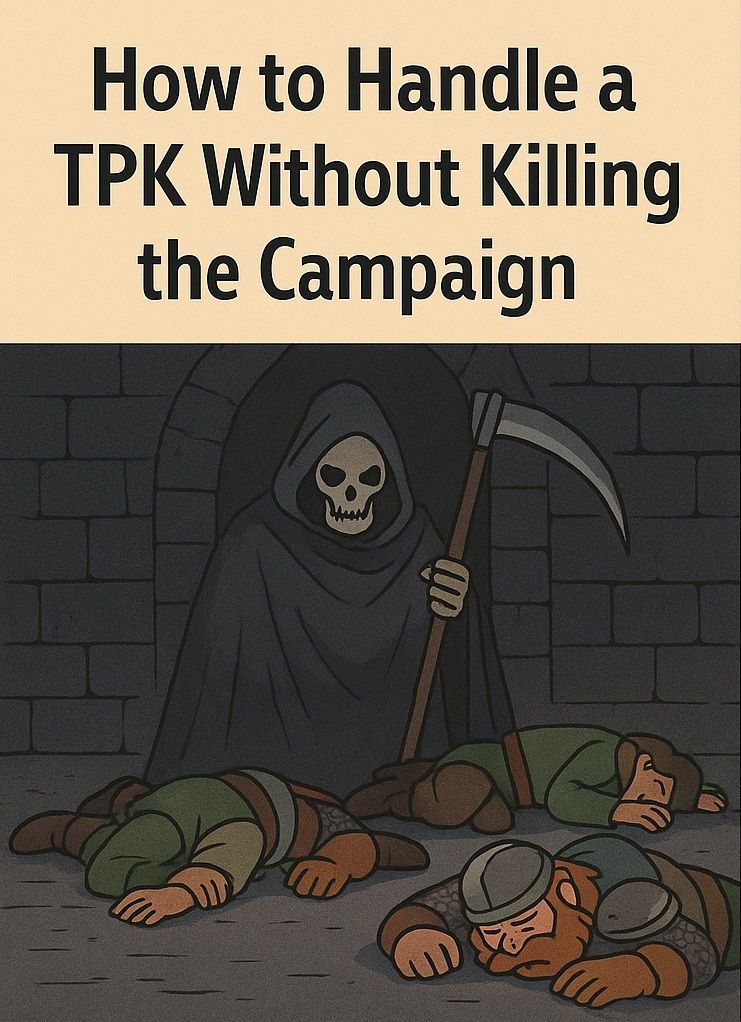Crafting Cursed Items: Adding Temptation And Consequence To Your Game
Cursed items and their manufacture

Dear Readers,
When it comes to magic items in Dungeons & Dragons, few things can spark a mix of excitement and trepidation like a cursed item. These enigmatic treasures hold a unique place in our games, offering not just power but a double-edged sword of risk and reward. They challenge players to weigh the lure of great strength against the peril of hidden consequences, and for Dungeon Masters (DMs), they provide a tool to create memorable moments of drama, humor, and tension.
In this blog post, we'll delve deep into the art of crafting cursed items, exploring how to balance temptation and consequence, how to introduce them into your game, and how to handle the fallout when a player finally succumbs to their allure. Whether you're looking to add a subtle curse to an otherwise mundane object or design a legendary artifact with world-shaking potential (and danger), I've got you covered.
Why Use Cursed Items in Your Game?
Cursed items are more than just traps for players. They serve several valuable purposes in storytelling and gameplay:
- Adding Depth to Treasure: Not every reward should be a straightforward benefit. A cursed item can make treasure feel less predictable and more engaging.
- Creating Tension: When players realize that not everything they find is as it seems, they approach loot and rewards with caution, adding a layer of strategy and suspense.
- Character Development: A well-placed curse can challenge a character’s morals, test their willpower, or push them into new story arcs.
- Story Hooks: The process of identifying, dealing with, or removing a curse can lead to entire adventures or quests.
The Anatomy of a Cursed Item
A well-designed cursed item is built upon a foundation of four critical components: Temptation, Hidden Consequence, Discovery Mechanism, and Removal Method. Balancing these elements effectively can transform a cursed item from a simple trap into a powerful storytelling tool.
1. Temptation: The Allure of Power
A cursed item must first present a strong temptation to the player. This could be a powerful mechanical benefit, a unique ability, or something that aligns closely with the character’s desires. The item should be attractive enough that the player feels compelled to use it, even if they suspect something might be wrong.
- Balancing Temptation: Ensure the item offers something genuinely valuable, but avoid making it too powerful without consequences. An overpowered item might break the game balance, while a weak item may not tempt the player at all.
2. Hidden Consequence: The Sting in the Tail
The curse itself should not be immediately apparent. Instead, it should emerge gradually or under specific conditions, catching the player off guard. This could manifest as a subtle detriment at first, escalating over time.
- Balancing Consequences: The curse should impose a meaningful penalty but not render the character unplayable. Consider how the curse interacts with the character’s strengths and weaknesses.
3. Discovery Mechanism: The Clues and Foreshadowing
An essential part of integrating cursed items is providing opportunities for players to discover the curse. This could be through lore, NPC warnings, detect magic spells, or the results of identify spells. The discovery process should create suspense and provide opportunities for roleplay and investigation.
- Balancing Discovery: Avoid making the curse too obvious or too hidden. Players should feel a sense of achievement if they uncover the truth, but it should not be so obscure that they feel blindsided when the curse takes hold.
4. Removal Method: The Quest for Redemption
A good cursed item often includes a method to break the curse. This should not be easy, but it should be achievable through clever play, completing specific tasks, or making significant sacrifices. The process of lifting the curse can become a quest in itself, offering new adventures and story development.
- Balancing Removal: The removal method should be challenging but not impossible. It could require the completion of a side quest, the use of rare resources, or a dramatic choice by the character.
Example Cursed Items
- The Sword of Hollow Victory Effect: Grants a +2 bonus to attack and damage rolls, but each enemy defeated causes the wielder to gain a level of exhaustion. Removal: Perform a selfless act that brings true joy to another person.
- The Amulet of Eternal Hunger Effect: Immunity to poison and disease, but normal food and drink provide no nourishment. The wearer must consume raw magic to survive. Removal: Complete a pilgrimage to a sacred place of abundance.
- The Ring of False Immortality Effect: Prevents death by normal means, but the wearer cannot regain hit points naturally or through magic. Removal: Sacrifice immortality to save another.
Designing a Cursed Item: Step-by-Step
Step 1: Choose a Tempting Benefit
Imagine a cloak that grants the wearer the power of flight.
Step 2: Develop a Hidden Consequence
The cloak slowly turns the wearer into a shadow, causing them to lose physical form and making it impossible to interact with the material world.
Step 3: Create Discovery Mechanisms
Add lore about the "Lost Champion" who faded into nothingness. NPCs might mention ghostly figures seen near ancient ruins.
Step 4: Design a Removal Method
The curse can be lifted by standing in the light of dawn at a sacred temple and confessing one's deepest fear.
Conclusion
Cursed items are a powerful tool in any Dungeon Master’s arsenal. When used thoughtfully, they can transform a mundane treasure into a story-driving force. Whether you’re looking to add a dash of chaos, a hint of horror, or a test of character, cursed items can provide endless opportunities for creativity and storytelling.
Until next time, Dear Readers...
























